You’ve Survived The Disaster– Now What?
In this post I’m going to talk about my 24-hour emergency pack. It can fit in a pocket, and help me get me through the potentially nasty 24-hour period after a disaster strikes. It’s based on the Rule of Threes: You can survive for up to three weeks without food, and up to three days without water, but you can freeze to death in under three hours if the weather is cold, and suffocate in less than three minutes in a dust- or smoke-filled atmosphere.
This survival pack addresses those last three issues, breathing, staying warm, and staying hydrated. You have the option to add some food, but going without food for 24 hours or more won’t hurt a healthy human.

Structure fires, forest fires, and wildfires are some of the most common disasters faced by people these days, but things besides fires can hurt your lungs. If you were alive during 9-11, when the Twin Towers fell you no doubt remember the videos and pictures of people on the ground trying to run away from the massive dust cloud. Because of the potential of dust or smoke destroying your lungs, this mask is the most important item in this kit. It is not for protection against viruses, I’m not silly enough to believe it would work for that. Make sure you get at least an N95, not the KN95, which is made to Chinese standards, and isn’t as good.
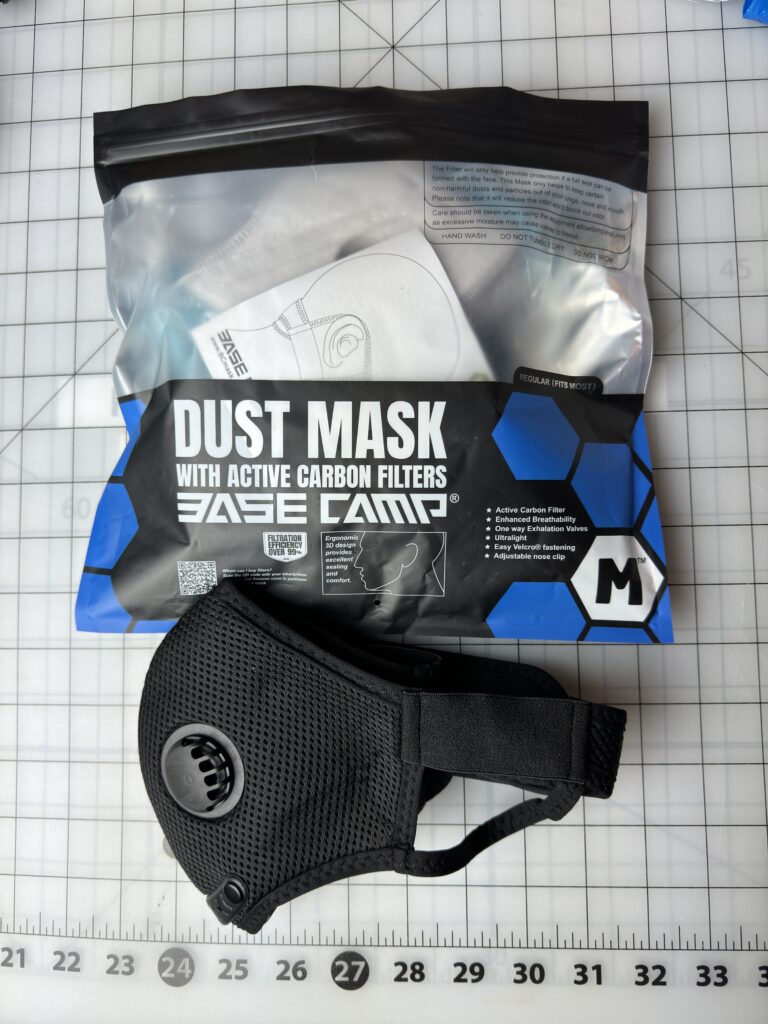
There’s also this mask which filters 99% of dust and smoke, but it’s thicker because of the valve covers. These masks can help your lungs working until you get to fresh air.
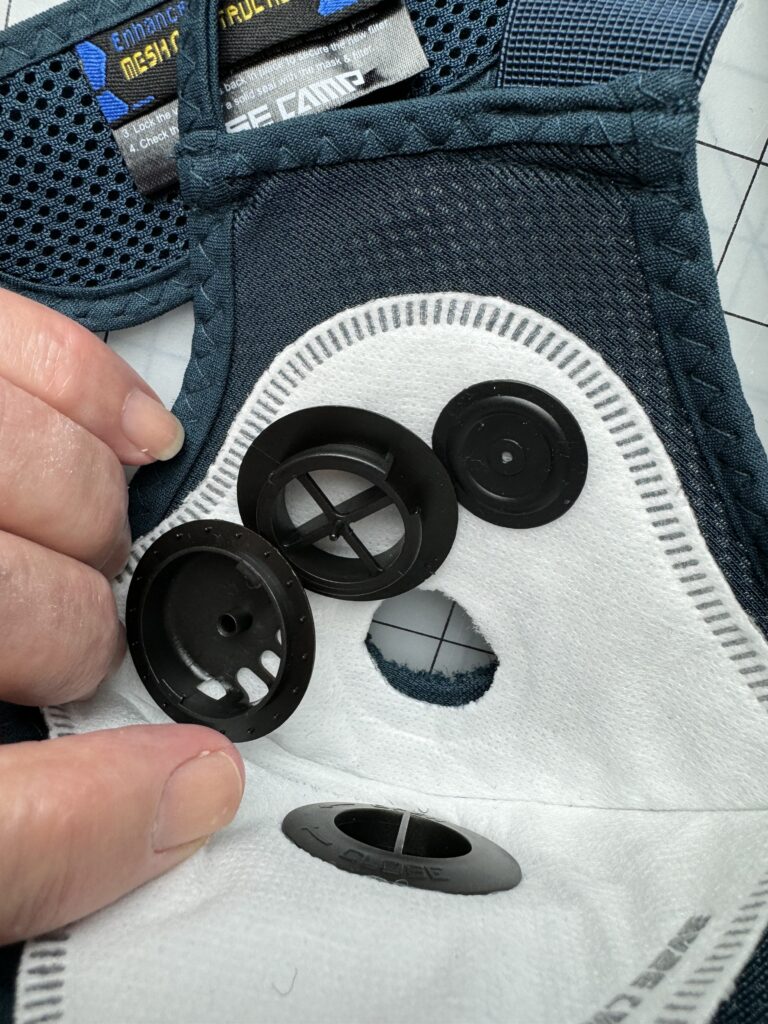
Note that the valves are removable so that the filter material or even the valves themselves can be replaced, and this can make the mask much thinner for storage.
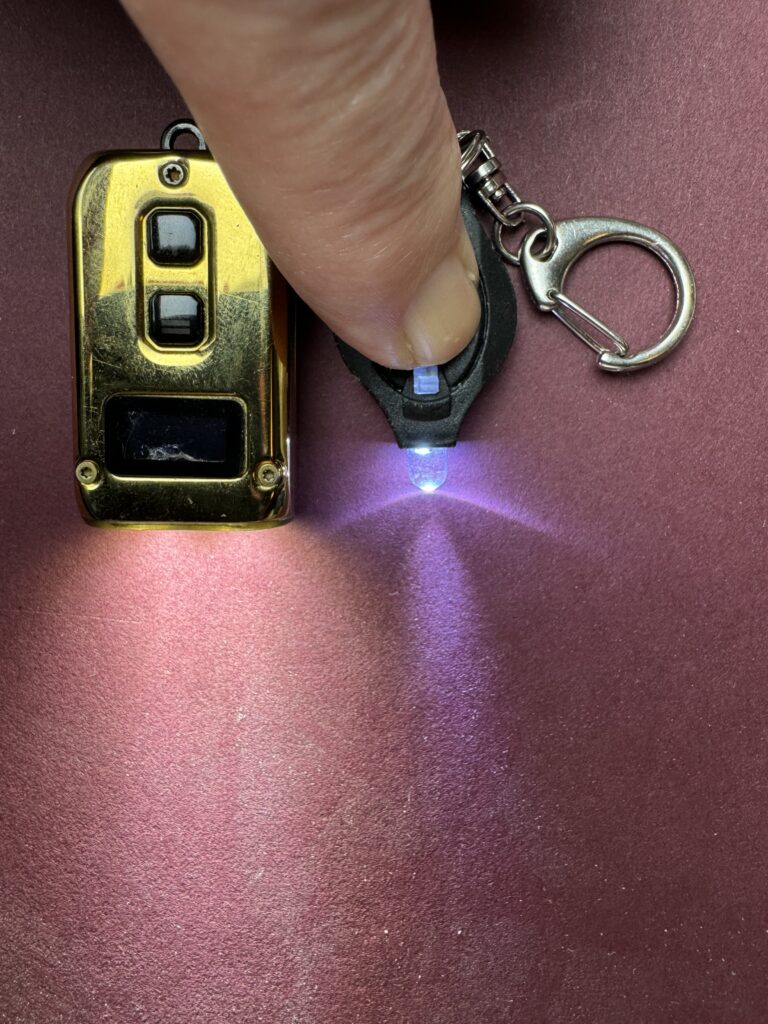
If the electricity goes out when I’m in a building, a flashlight can help me get to safety. The gold one is a bit of overkill, but it will do the job and then some. It’s the Tini 2 by NiteCore. This other one is a cheap button-cell flashlight you can purchase for less than a buck off of Amazon.
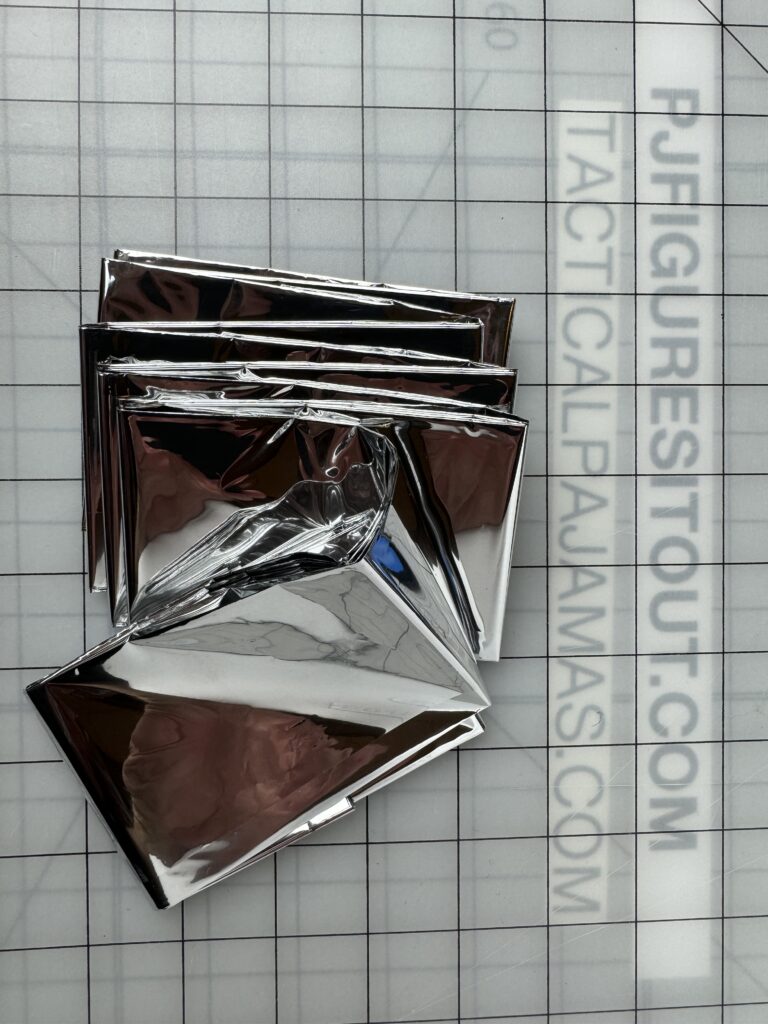
The next problem is staying warm. These mylar blankets are cheap and effective and can keep in what warmth you have.
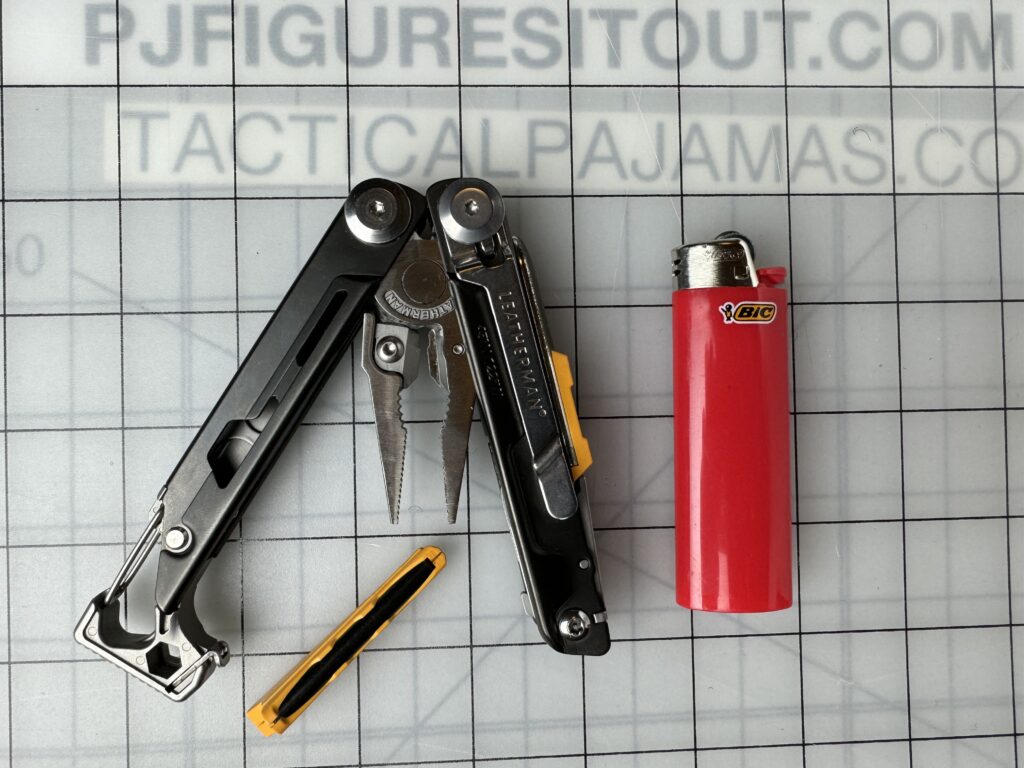
As for generating heat, if I have enough material to make a fire this lighter can start it. I always try to carry this Leatherman Signal multi-tool, which has a built-in ferrocerium striker for making sparks.
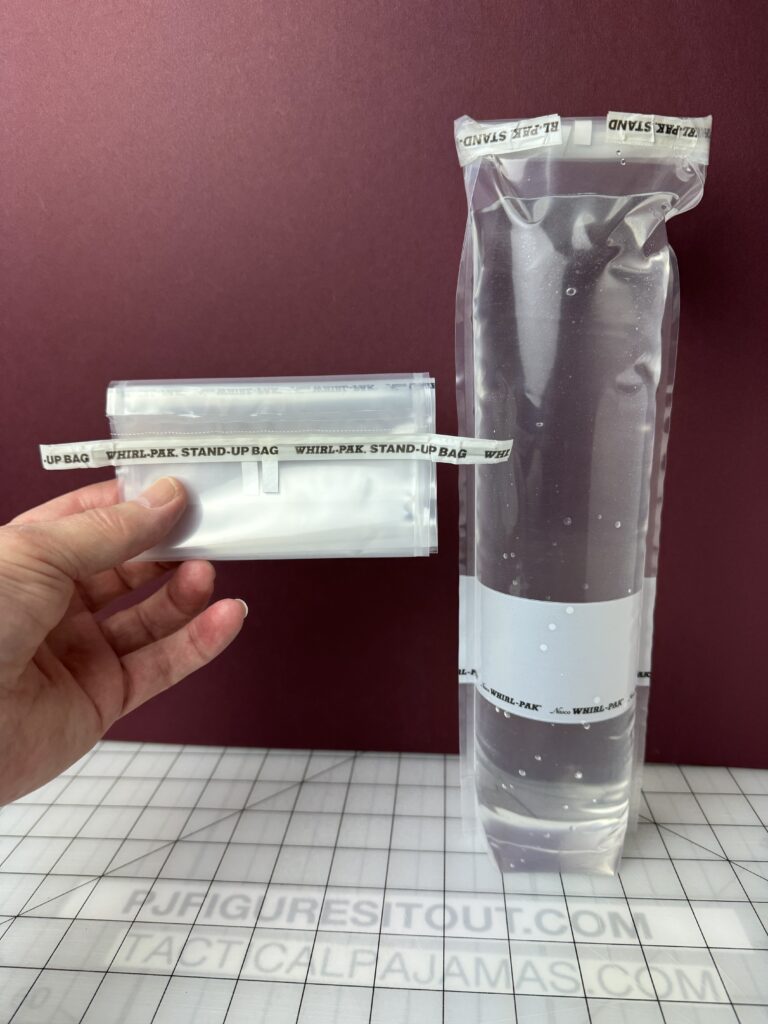
If I have to walk a long distance to get away from a disaster area, and there is no drinkable water handy, I’ll need a way to sterilize any other water I can find. This is actually a one-liter water sack, which which takes up very little space when it is folded down.
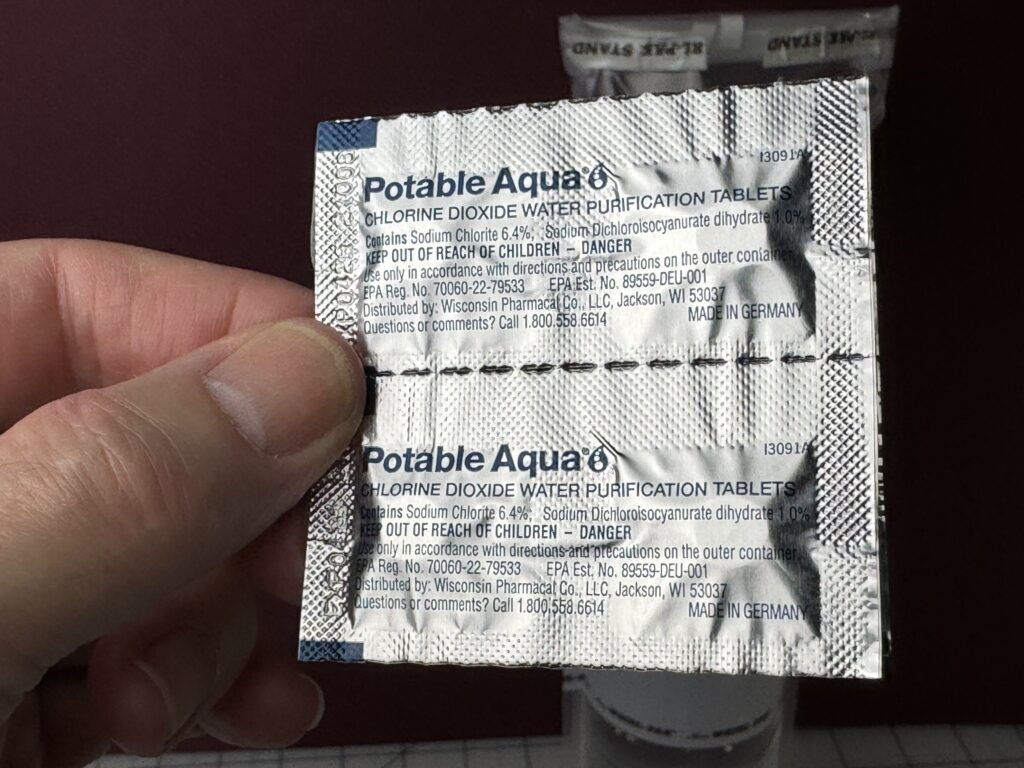
These are water purification tablets. After you get water into the sack, put two of these tablets in and let them work for the required amount of time, and any water will be biologically safe to drink.
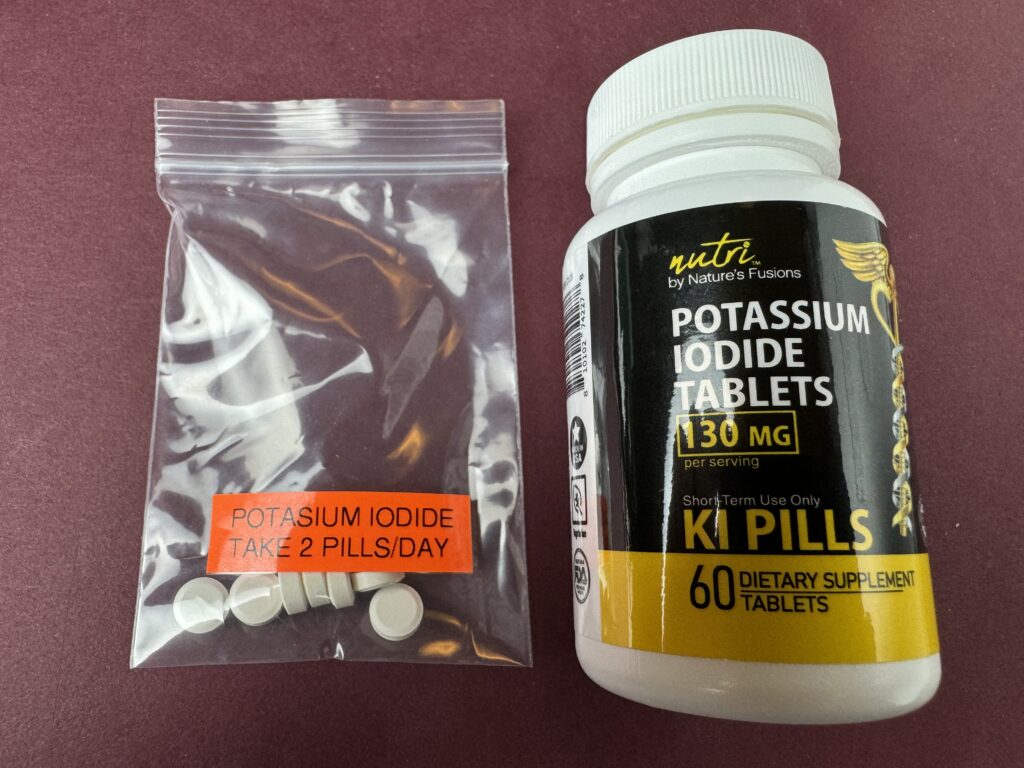
These are potassium iodine pills. If you see a mushroom cloud off in the distance, or if there are reports of a nuclear accident or a dirty bomb going off, take a dose immediately.
So there’s the basic list: An N95 or better respirator mask, a mylar blanket, a means of making fire, a collapsible water bottle, water purification tablets, and potassium iodide pills.
What else might be useful?
ADDING EXTRAS
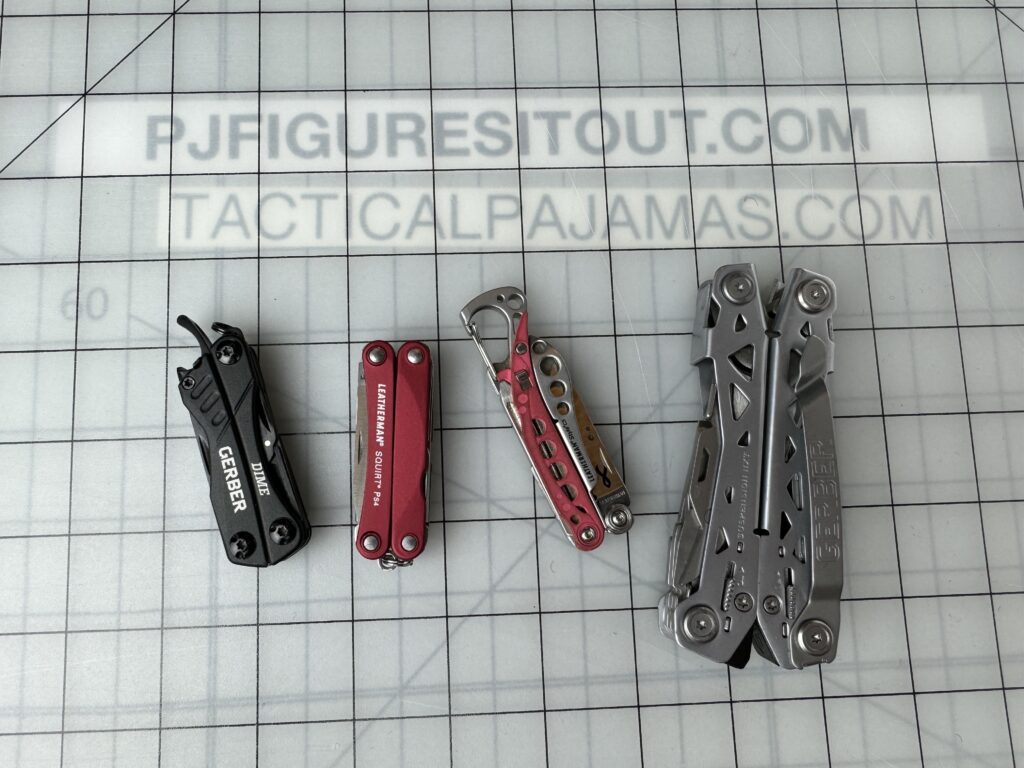
I always try to have some sort of multi-tool with me. A small one like the ones on the left can fit in the bag, but otherwise I’ll rely on a larger one being on my belt.
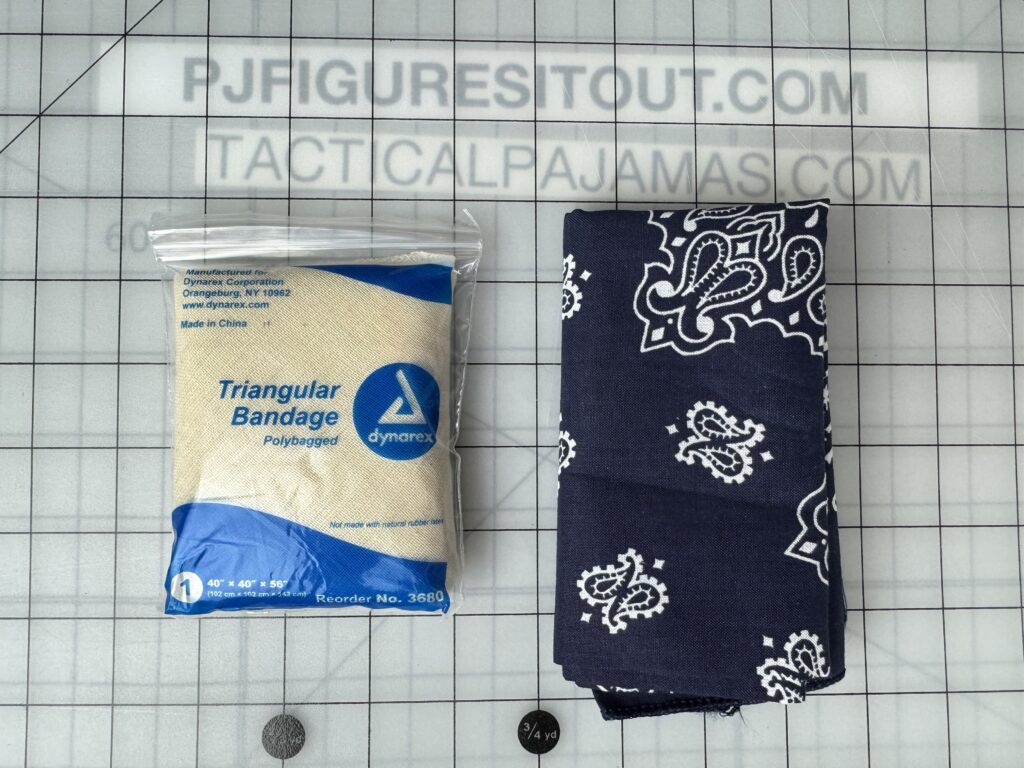
Bandanas are handy for many things, from pre-filtering water to binding wounds or making a sling for an injured arm. If you don’t mind the extra bulk, put one in your kit. A triangular bandage is also a good alternative.
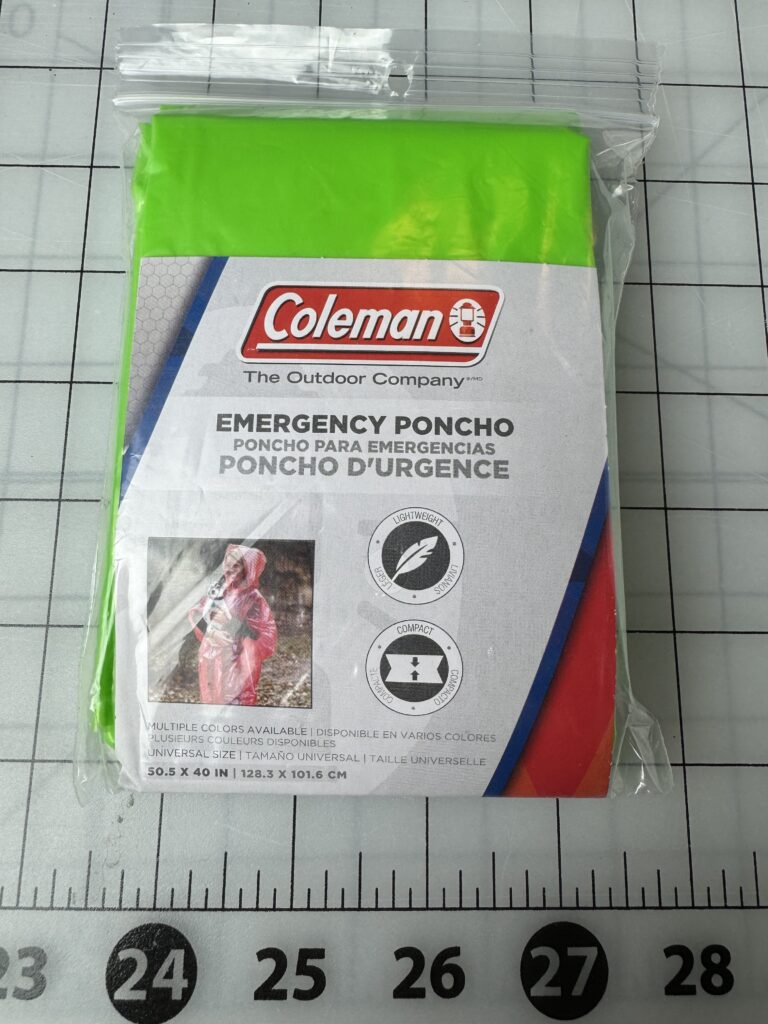
If you live in an area that gets lots of rain but doesn’t get too cold, then you might want to substitute a cheap, lightweight poncho for the mylar blanket, or you could carry both.
I’ve designed a small medical kit called the SABFAK, short for Sandwich Bag First Aid Kit. It can deal with injuries ranging from sucking chest wounds to amputations and gashes, plus digestive issues and common cuts and scrapes. It’s too big to fit in a pocket, but it will fit into a briefcase, backpack, or big purse. See this article for more info.
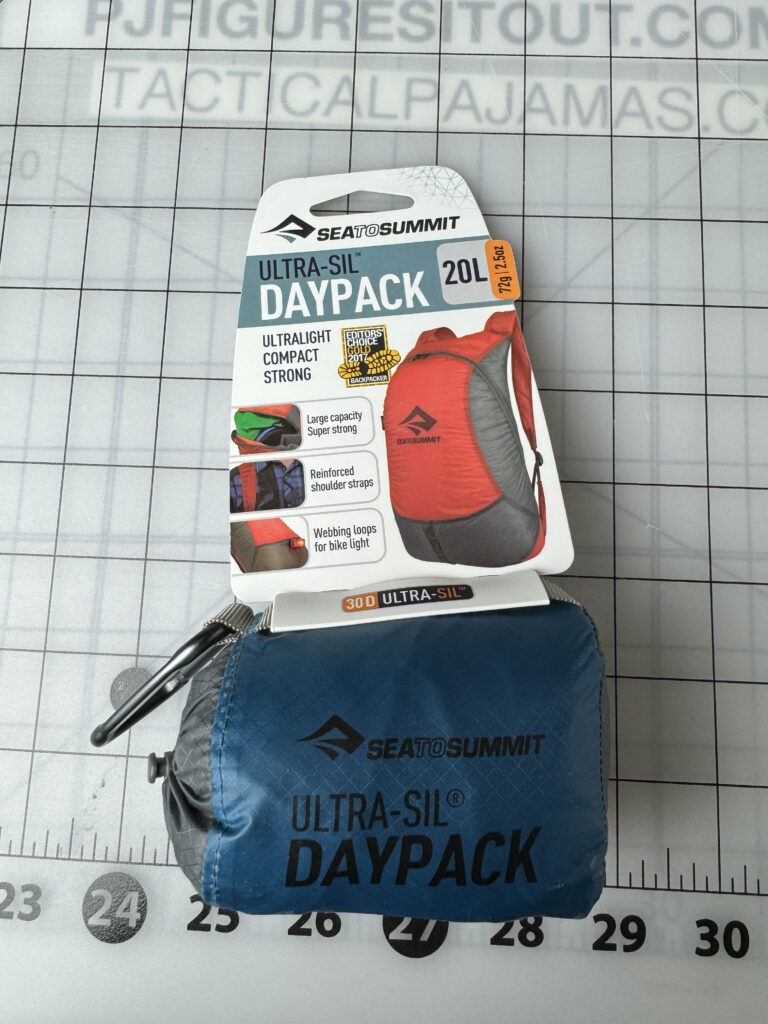
This is a backpack that folds up into a very small case. If you can scrounge water, food or other supplies from a workplace or wherever else you may be, a backpack can make them much easier to carry.
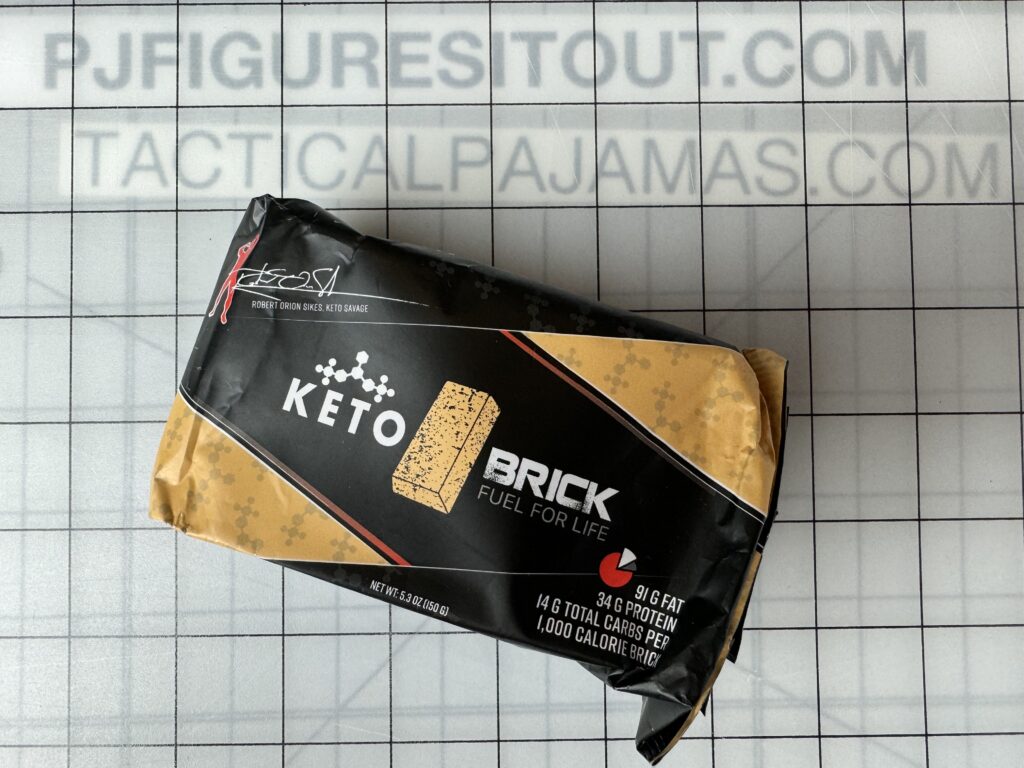
You’ll notice I’m not paying much attention to food. That’s because this kit is meant to help get you to a safe place where there will be supplies, and going 24 hours without food isn’t a big deal. However, if you’re preparing this kit for use in a backpack, you can throw in one or more of these. It’s called a Keto Brick, and it has 1000 calories. You can also toss in trail mix or other calorie-dense snack.
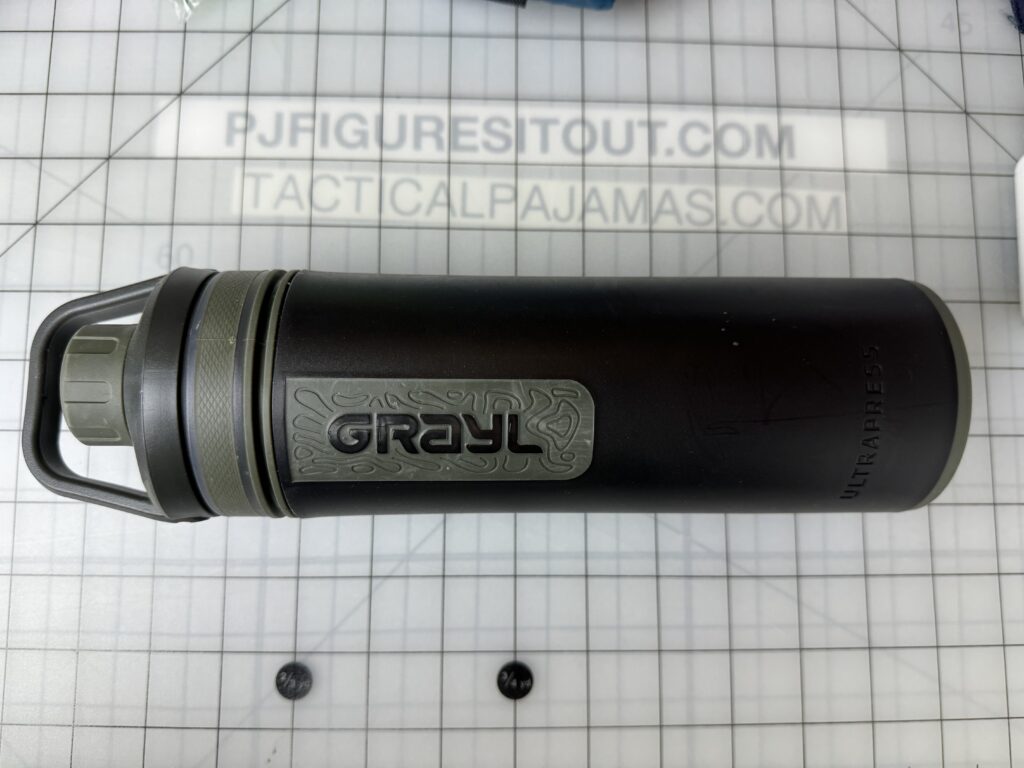
If you really want to step things up a bit, you can get a hard-sided water bottle. This one from Grayl is both a bottle and a filter, and you can stuff the rest of the kit into it. It’s way too bulky for a pocket, but if you commonly carry a backpack or a briefcase it works great.
Here’s the list of extras: Multi-tool, bandana or triangular bandage, cheap poncho, backpack that packs down small, keto brick or other calorie-dense snack, hard-sided water bottle, and the SABFAK first-aid kit.
So, that’s the bare minimum for survival for the first 24 hours after a major calamity. Protect your lungs, make sure you can see, don’t freeze, and have a way to purify water. At the very least, carry an N95 mask in a sealed bag, and don’t use it for anything other than true breathing emergencies. Good luck to all of us, and stay safe out there.
